It can be overwhelming to look out on your lawn and garden and see all the fall cleanup tasks that await you. It’s enough to make you want to stay inside, curl up with a good book or movie, and ignore it all. And you know what?

You can!
A lot of what’s on our fall yard and garden to-do list doesn’t really need to be done. In fact, there are good reasons not to clean up outdoors in the fall.
Let’s put the to-do list aside, forget about all the things we’ve been told for years that we simply must do in the fall, and rethink how we keep our yards and gardens in the autumn and winter.
Jump to:
- Autumn Lawn and Garden Tasks That Don’t Really Need Doing (And with Good Reason)
- Raking leaves isn’t necessary
- You don’t need to remove dead plant stalks and stems
- Don’t worry about pulling up dead plant roots
- You’re better off not tilling the garden
- There’s no need to throw out mums and potted perennials
- You don’t need to plant cover crops, especially if you don’t do these other things
- Prune roses, shrubs, and many perennials
- Why you might want to do some (or all) of these things anyway
Autumn Lawn and Garden Tasks That Don’t Really Need Doing (And with Good Reason)
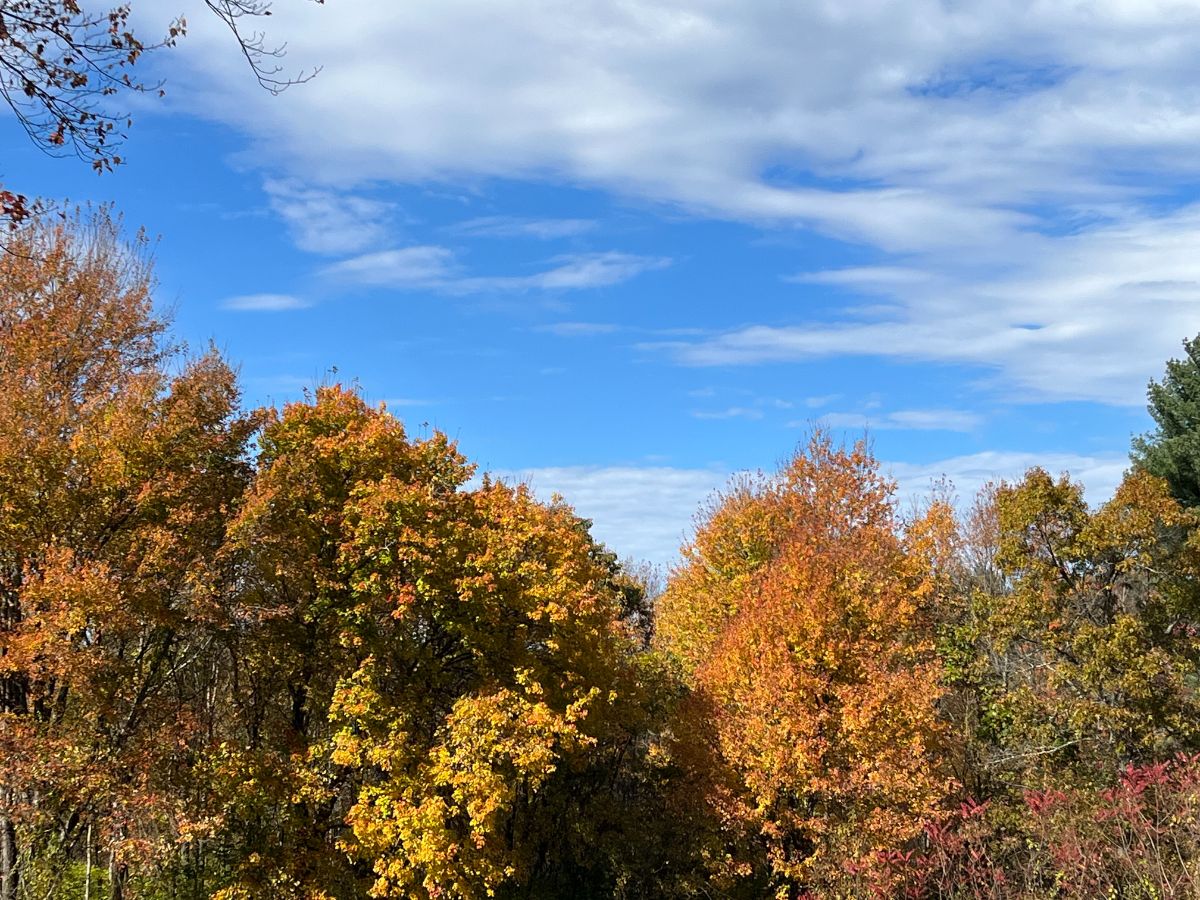
We’re not just making excuses here. These fall cleanup tasks are things we’ve been trained to do, but if we don’t, we let nature take its course. And it helps nature (and all its small creatures) immensely. Let’s take a look at some of the top fall cleaning projects we can easily get you out of:
Raking leaves isn’t necessary

Have you seen the latest meme on social media? The one that says something like (or maybe exactly like), “You know if you don’t rake the leaves, they turn into soil, right? They don’t break into your house and drink all your wine or anything.”
Personally, I love the “new” push not to rake or blow off our lawns in the fall. I’ve always scratched my head on this one. Living my whole life in New England, fall puts on quite a show, and I love the carpet of color that decorates my yard every autumn. I like to walk in it and see the color. Kids and animals love to play in it. I’ve always wondered what the big deal was!
I especially wondered because truth be told, there were plenty of years when I *gasp* didn’t rake my lawn—before it was cool not to rake your lawn. You know what happened?
Not much. The storms and winds blew, and most of the leaves went away or maybe made some piles along fence lines and under shrubs; they kept some weeds down and broke down into soil.
When spring came, and the kids were small, they enjoyed seeing salamanders and other sleeping critters waking up and crawling out of the piles.
What remained mostly got mulched with the lawnmower. The last remnants were raked up and moved to the edge of the woods or went into a compost pile or on the gardens as mulch.
...Interesting. All the things the new wave “don’t rake” memes and articles say to do.
Ignoring (or enjoying) the fall leaves on your lawn and in your garden can do a lot of good. Leaf cover provides natural shelter and habitat for small animals and insects. They help beneficial insects overwinter, so the population is in place to help your garden in the spring.
They mulch down, build soil, grow valuable leaf mold, and feed and improve lawn and garden soil. Over winter, the natural mulch layer helps to protect perennial plant roots—just like they do naturally in the woods, where they’re left alone.
So yes, there are plenty of good reasons not to rake or blow off your lawn or garden this fall. Blow off the job instead.
You don’t need to remove dead plant stalks and stems

Dead plant stems and stalks are often home to overwintering butterflies in cocoons. Native bees will make homes in hollow stalks. Ladybugs (natives, not the invasive Asian types that come into our homes) and other insects need old plant matter and debris to live in during the winter, too.
Even the insects we consider pests will overwinter there, which you may think of as a negative, but things like aphids are food for ladybugs and the beneficial bugs we want, so having both there when the good guys wake up in the spring helps support and grow those beneficial populations and keeps them on top.
For perennials, it’s usually better to leave their stems, stalks, and old growth intact through the winter. It protects the crowns and reduces winter damage and winter kill.
Don’t worry about pulling up dead plant roots
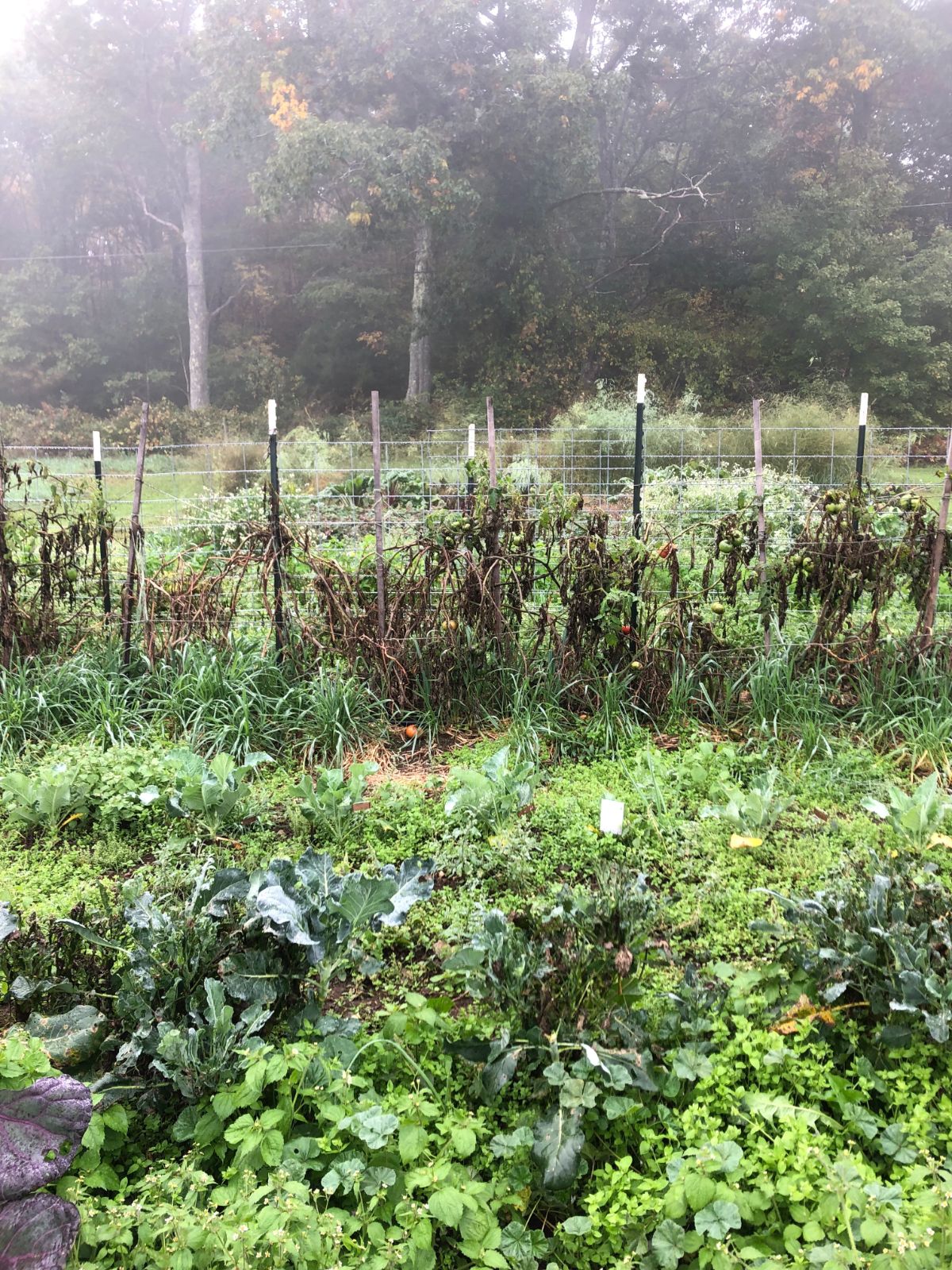
You don’t have to pull out old plants and their roots from annuals or vegetable plants. Leave them in place to help hold the soil and to build up soil microbes as they break down. Decaying roots also increase beneficial nematodes and worms, and they build the soil and act as a natural fertilizer—like composting, but where they grew, without pulling them out and hauling them to a pile. Just to haul it back again.
You’re better off not tilling the garden
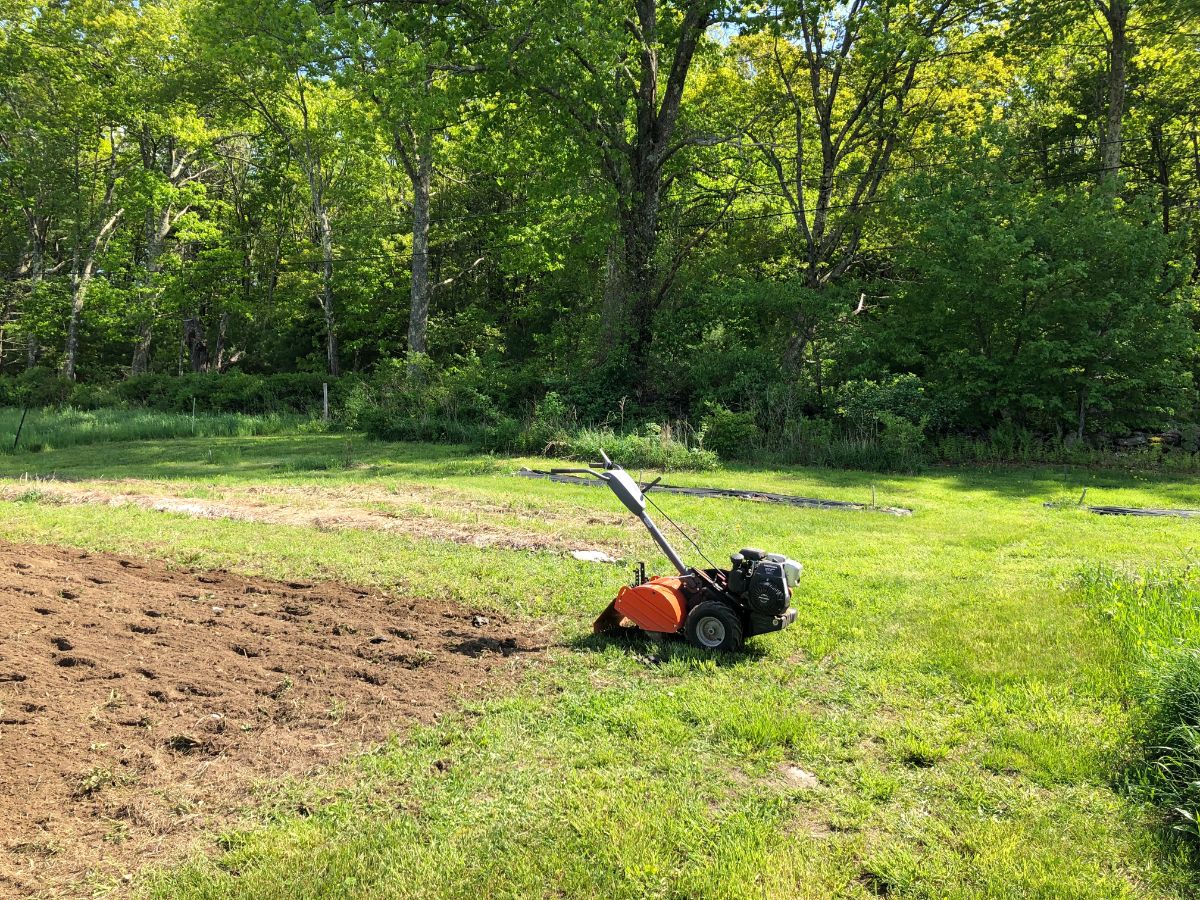
Sure, it’s nice to wake up in the spring and have your garden clear and tilled, but it’s better for your garden if you don’t, at least in most cases.
You won’t be leaving the ground bare and open to wind and winter erosion; you won’t be losing as much soil moisture; and you won’t be losing the goodness old plants, leaves, and organic matter can add as they break down over the winter.
Besides that, compaction over winter means you have to till the garden again in the spring anyway, so it’s not really ready, is it? Tilling in the fall is actually adding work, not saving it.
There’s no need to throw out mums and potted perennials
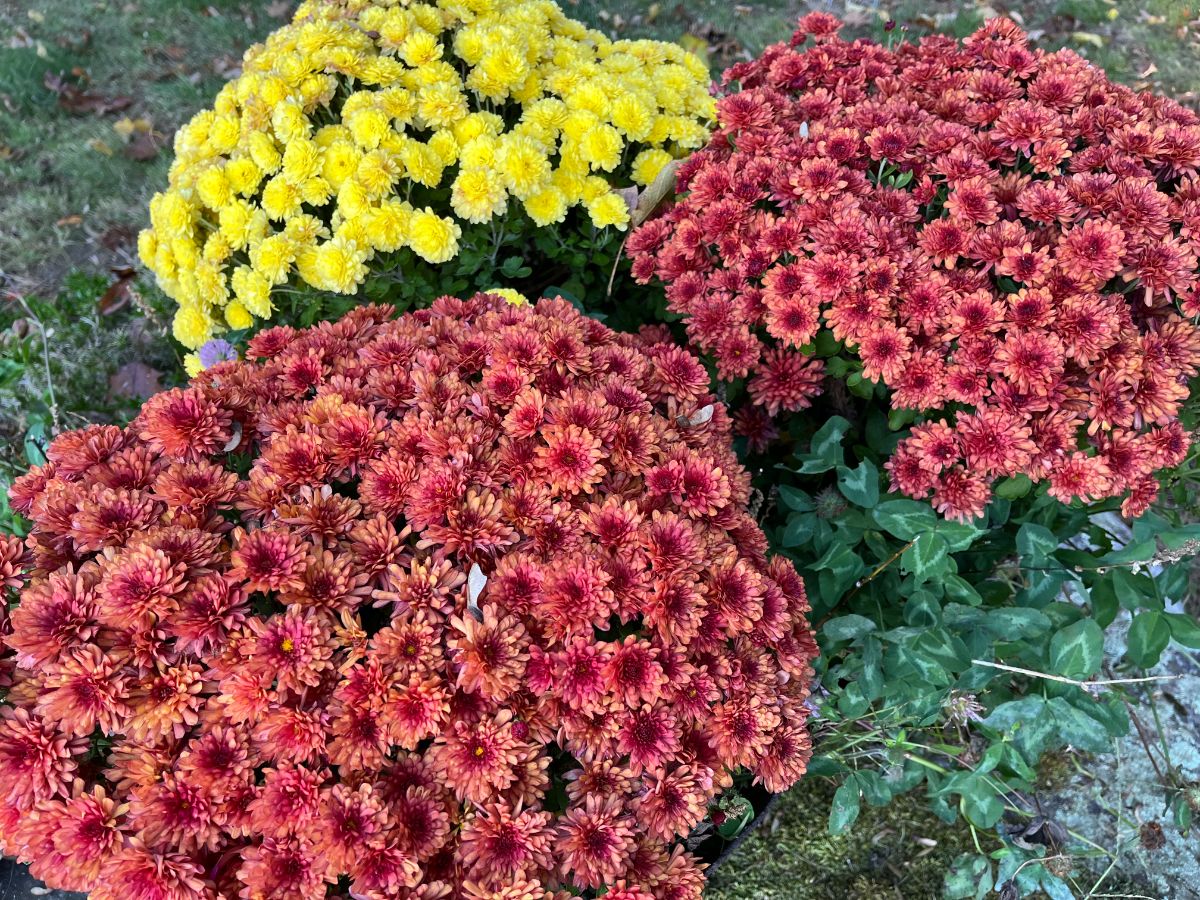
All those hardy mums we treat like annuals and all those perennials you have growing in containers that are either too exposed or too tender to live outside in your pots through winter do not need to be wasted. You don’t have to throw these out; you just have to take them inside to overwinter where the conditions aren’t quite so harsh.
You don’t need to plant cover crops, especially if you don’t do these other things
Cover crops are great, don’t get me wrong. But their purpose is to hold soil and moisture in place, cover ground and reduce erosion, and then rebuild soil and nutrients when they are killed and tilled under in the spring.
The thing is, if you’re not stripping your garden bare anyway, and you’re leaving some roots and old plants in place, and you’re leaving leaf litter or covering the garden with leaf litter, grass clippings, etc., cover crops would be redundant (and probably wouldn’t have enough seed to soil contact to grow anyway).
Cover cropping, for all that it is good, is also expensive. You can save a lot of money by not doing the things that make it necessary in the first place.
Prune roses, shrubs, and many perennials
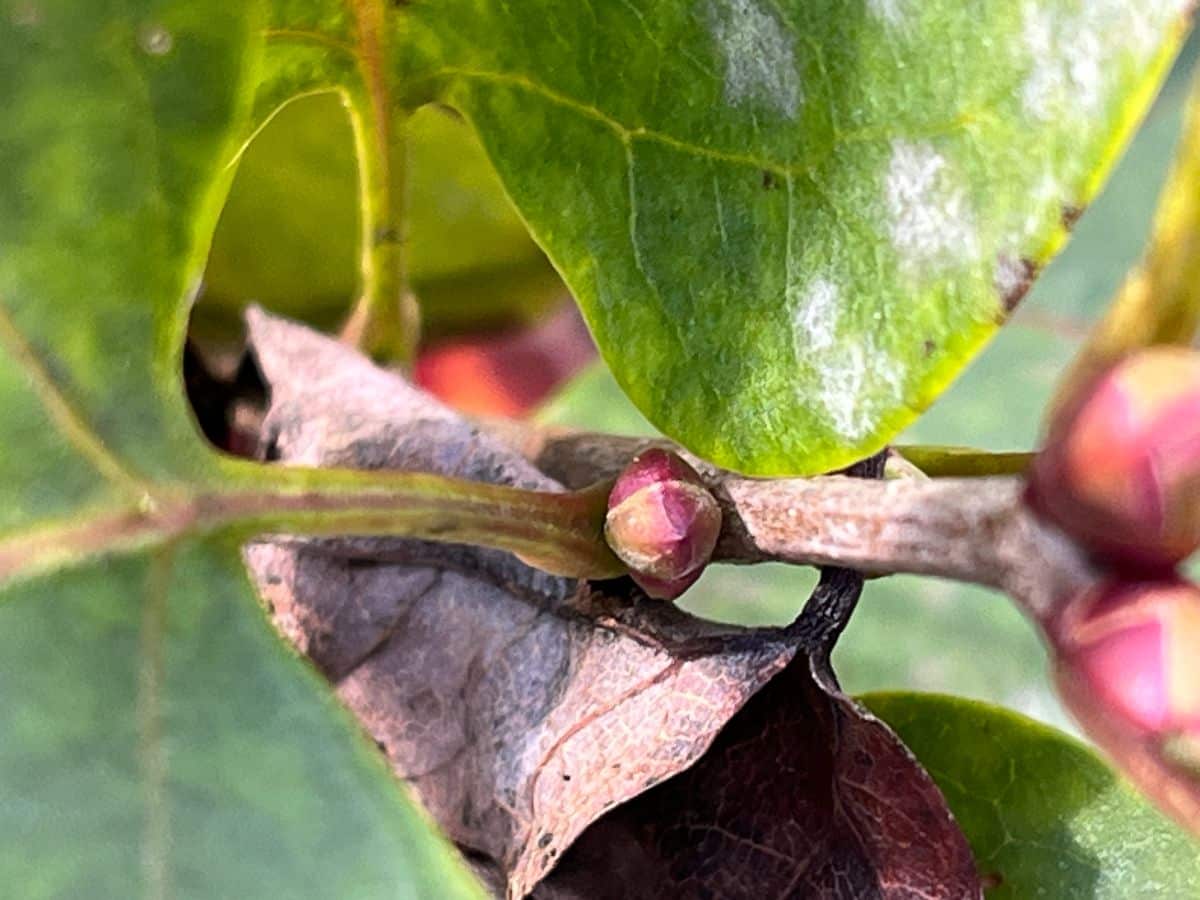
Pruning roses and other bushy perennials can stimulate new growth at a time when the plants should be going dormant. That new growth is susceptible to freezing and dying.
Pruning can also ruin your next season’s flowery show. Many perennials set their buds the year before, in the summer or fall, so if you prune them before they flower in the spring and summer, you’re often removing the flowering buds.
Spring pruning is more effective for most perennials when you can remove the dead growth or wait until after the bush has flowered so you don’t cut away your blossoms’ buds.
Why you might want to do some (or all) of these things anyway
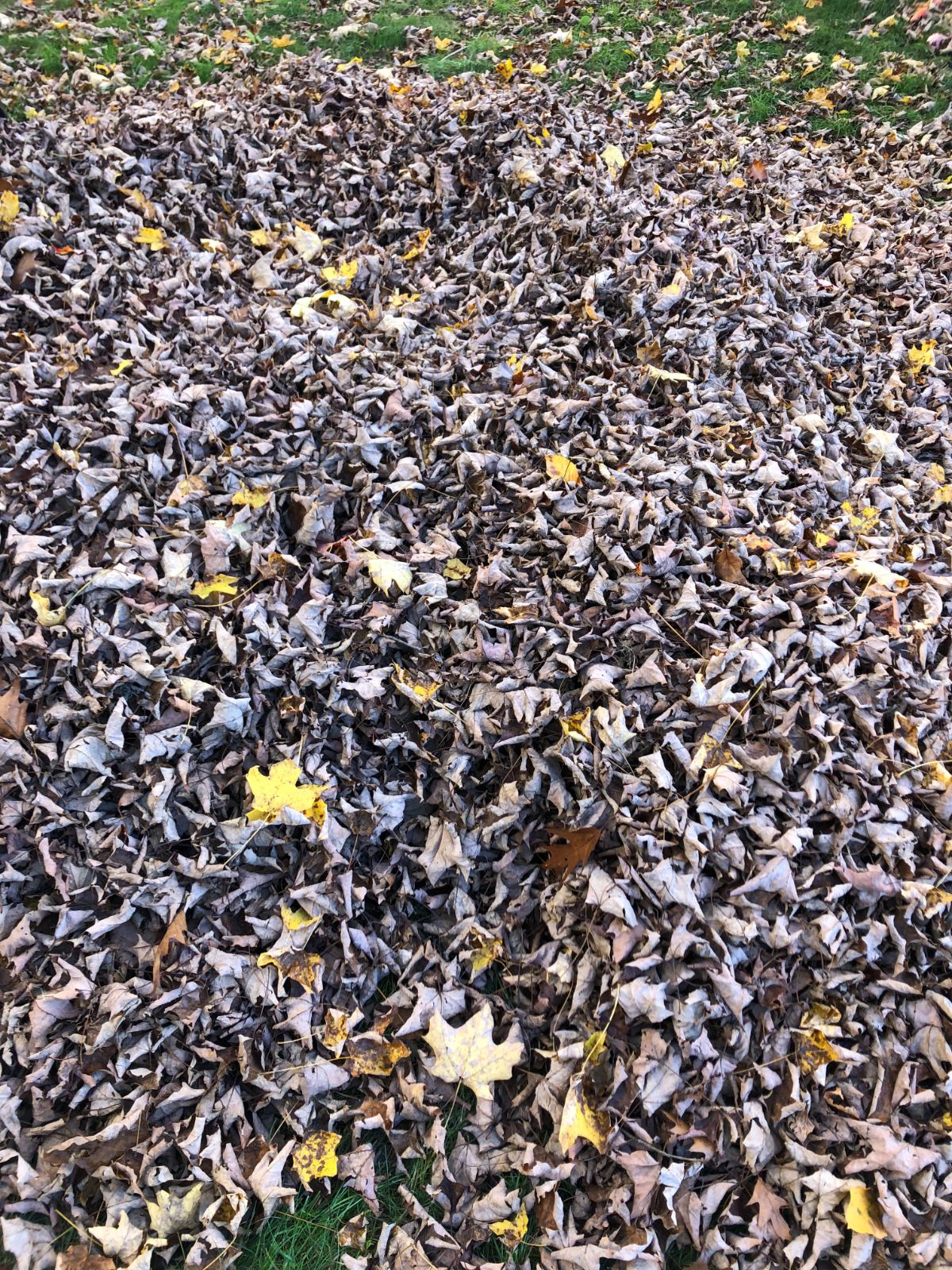
It’s true that some of us may need to find a happy medium with some of these recommendations. You may need to appease your own ingrained, trained nature to see a manicured space. And there are some other real reasons why, at times and under certain circumstances, skipping these things may not be the best idea.
Some things to consider and a few reasons why you may need to do some or part of these tasks are:
- Leaf litter may become very thick on lawns and might mat and kill grass. It’s not as common a problem as you might think, but it can be an issue. A good compromise is to run over the leaves with your lawn mower. This breaks them up and stops them from becoming a matted carpet. It also makes them break down into valuable natural compost and soil faster.
- If you have plants that were plagued by disease—like downy mildew—it's better to cut the stems and stalks and get rid of them. These should not go into your compost pile; they should be bagged and trashed, or better yet, burned (safely when the ground is wet) and turned into ash, which can go back into your garden and feed the soil or used on your lawn in place of lime.
- Stalks with seed heads can reseed themselves. This can be good or bad. It’s good if they are flowers that you like and that you want more of. Seed heads also make excellent food for birds and wildlife over winter, which is important because food is often scarce, so you’re helping. It’s bad if they are weed seeds or invasive species. Those should be weeded out, cut, or mowed before the seed becomes viable and spreads to be a bane.
- Tilling might be advised for your garden if you have big problems with soil pests. If you have parasitic nematodes or are overrun with grubs, it’s advised to till your soil a few times to expose them to cold, predators, and the elements. Nematodes attack plant roots and will live there, so they would also be a reason to remove the roots to reduce their numbers (but then, you might be losing an opportunity to balance the beneficial nematodes and microbes that naturally keep the parasitic type in check). It’s a matter, really, of how bad your problem is and how drastic a measure you need to go to.
- If you do choose to till -- for example, because you’re fighting a parasitic nematode infestation -- then cover cropping after might be in order. The University of North Carolina (link above) suggests rye, wheat, or annual ryegrass after tilling to expose parasitic nematodes.
A lot of the fall cleanup work we’ve done to “help” our yards and gardens in the past has, if not harmed them, not helped them. In many ways, we only make more work for ourselves and cost ourselves more time and money in the long run. When we remove the beneficial gifts of nature, we end up replacing them in the form of soil amendments, fertilizers, compost, and mulches.
For what? For a tidier yard through the winter (when we’re probably not spending that much time out there anyway)? Along the way, we strip native animals, bees, and beneficial insects of food sources and protected homes. So why keep making more work for ourselves? Why not take advantage of the fact that we’re starting to know better—and relax and enjoy the color and critters of autumn!

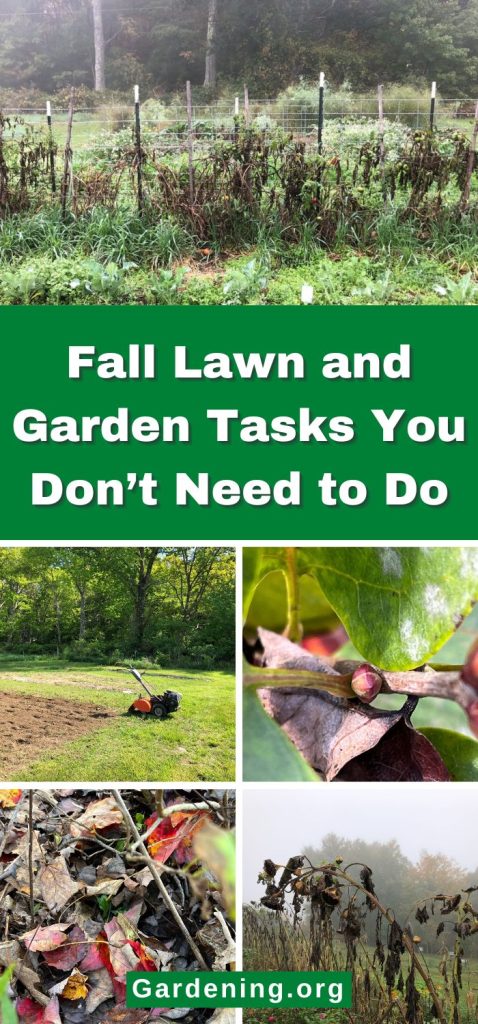
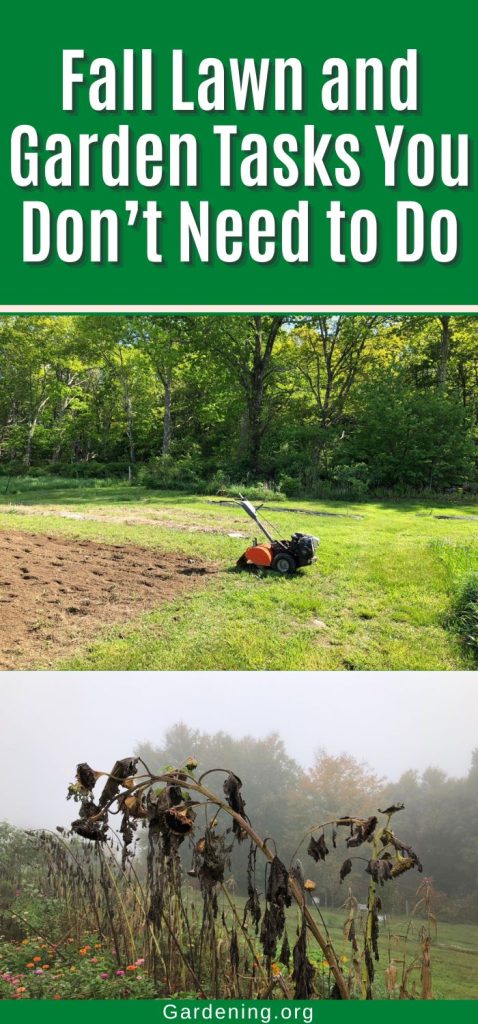

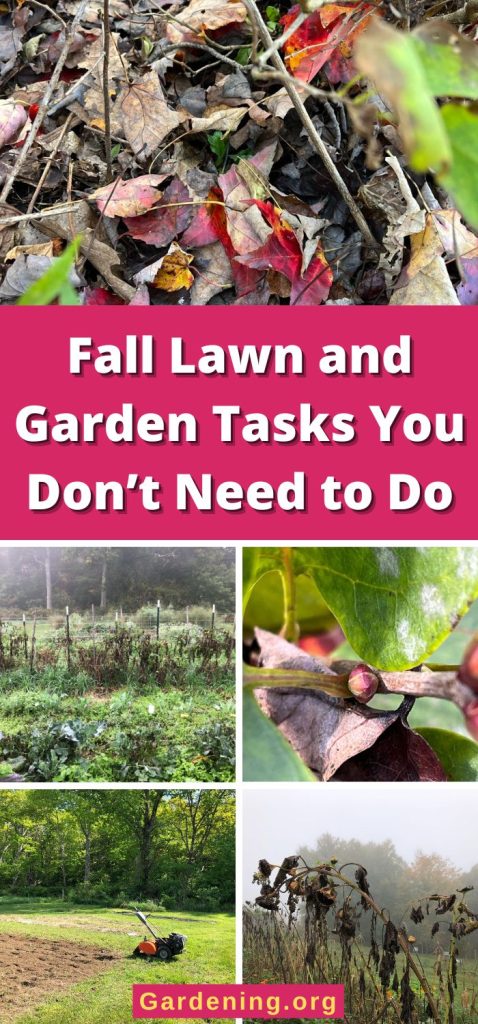




Julianne Page
What about pine needles?????
Do they need to be raked up?
Mary Ward
A thick layer of pine needles can form a mat that will kill grass. It depends how dispersed they are. And, if they are in a place where you mind it. Since they're so flat, lawn mowers won't always pick them up or cut them up if you run over them--you'd have to try it to see if yours will. If they're scattered thinly over the lawn you can let them be. Pine needles are good to use as mulch and to line walkways and on hillsides as erosion control because of the way they weave themselves together. So if you do decide they need to be cleaned up, you can put them to good use. Note that their acidity is only when they're fresh, so it can do a little to acidify soil, but that's not a very lasting issue, so that's not that much of an issue for your lawn and grass (but the fact that you have pine trees growing in your yard may mean you have acidic soil anyway).
These articles might help:
https://gardening.org/16-innovative-ways-to-use-pine-needles-in-the-garden/
https://gardening.org/pine-needle-mulch/